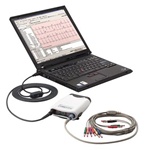
Tim Gee has put together an impressive conference. It's happening Sept. 10-11, 2009 in Boston. Unfortunately, I will not be able to attend. Hopefully Tim and others will be able to provide highlights from the many interesting topics.
Here's a condensed list of the agenda:
Day 1:
MEDICAL DEVICE CONNECTIVITY IN HEALTH CARE: WHERE ARE WE, WHERE ARE WE GOING, AND HOW DO WE GET THERE? Tim Gee, Connectologist & Principal, Medical Connectivity Consulting
CONNECTING OPERATIONAL AND STRATEGIC PERSPECTIVES Julian M. Goldman, MD, Medical Director of Biomedical Engineering, Partners HealthCare System, Director, CIMIT Program on Interoperability and Medical Device Plug-and-Play Interoperability Program, Massachusetts General Hospital
INDUSTRY STANDARDS (FORMAL AND DE FACTO) IN CONNECTIVITY Charles (Chuck) Parker, Executive Director, Continua Health Alliance
PANEL DISCUSSION: INDUSTRY STANDARDS – WHICH STANDARDS WILL BE ADOPTED AND WHY?
IMPACT OF PROPOSED FDA RULE ON MEDICAL DEVICE DATA SYSTEMS William A. Hyman, ScD, PE, Professor, Department of Biomedical Engineering, Texas A&M University & President, ACCE Healthcare Technology Foundation
IEC 80001 AND PATIENT SAFETY Stephen L. Grimes, FACCE, FHIMSS, FAIMBE, Vice
President, Technology in Medicine, Inc. & Immediate Past President, American College of Clinical Engineering (ACCE)
PANEL DISCUSSION: HOW WILL MDDS AND IEC 80001 IMPACT THE MARKET?
HOW CLINICIANS AND DEVICE MANUFACTURERS CAN COLLABORATE TO REDUCE RISK Steven R. Rakitin, President, Software Quality Consulting & AAMI member
THE BASIC COSTS OF CONNECTIVITY Bridget Moorman, CCE, President, BMoorman Consulting, LLC
Day 2:
TRACK A - INFRASTRUCTURE
CONVERGED MEDICAL DEVICE AND ENTERPRISE NETWORKS: CHALLENGES AND BEST PRACTICES
OPTIMIZING SUPPORT FOR POINT OF CARE AUTOMATION
DISTRIBUTED ANTENNA SYSTEMS: REALITY VERSUS HYPE
WIRELESS SENSORS: PERFORMANCE, COEXISTENCE & INTEROPERABILITY
TRACK B – CONNECTIVITY SOLUTIONS
INFUSION PUMP CONNECTIVITY FOR EMR DOCUMENTATION
ENABLING POINT OF CARE APPLICATIONS WITH DEVICE CONNECTIVITY
POSITIVE PATIENT ASSOCIATIONS IN CONNECTIVITY
OPERATING ROOM INTEGRATION: THE INFORMATION CROSSROADS IN SURGERY
TRACK C – CLINICAL & WORKFLOW IMPACTS
POST SURGICAL PATIENT-CENTRIC CENTRAL SURVEILLANCE: PREDICTORS OF CARDIORESPIRATORY MORBIDITY
THE LINK BETWEEN MEDICAL DEVICE CONNECTIVITY AND CLINICAL DECISION SUPPORT FOR INTERVENTIONAL GUIDANCE
CREATING A CONNECTIVITY STRATEGY FOR HEALTHCARE
OPTIONAL POST-CONFERENCE WORKSHOPS
ONE -- DISTRIBUTED ANTENNA SYSTEMS IN HOSPITALS: BEST PRACTICES
TWO -- IEC 80001-1: APPLICATION OF RISK MANAGEMENT FOR IT NETWORKS INCORPORATING MEDICAL DEVICES
UPDATE (9/10/09): Tim is posting conference updates here: The Connectologist
UPDATE (9/16/09):
Review #1: Wireless connectivity and medical devices
Integrating wireless technology into medical devices presents the industry with both a carrot and a stick: Stimulus cash (carrot) versus increasing demand for connective devices from hospitals (stick).
Review #2: Analyst: Healthcare’s wireless sensor opportunity
Gee broke down some of the drivers for the recent interest in medical sensors, outlined use cases and dissected the market for the more than 200 attendees at last week’s event.

 The issues raised in Tim's post
The issues raised in Tim's post 
